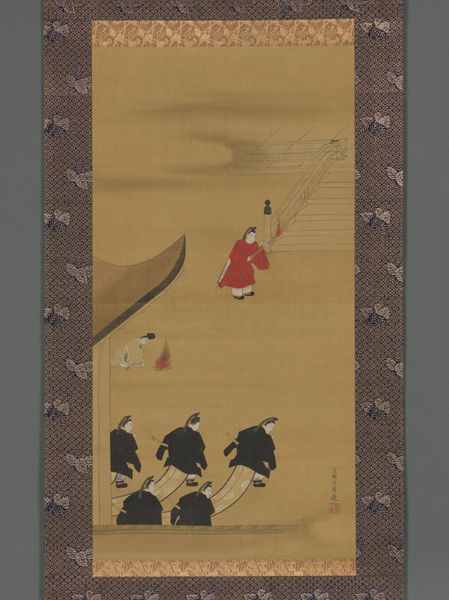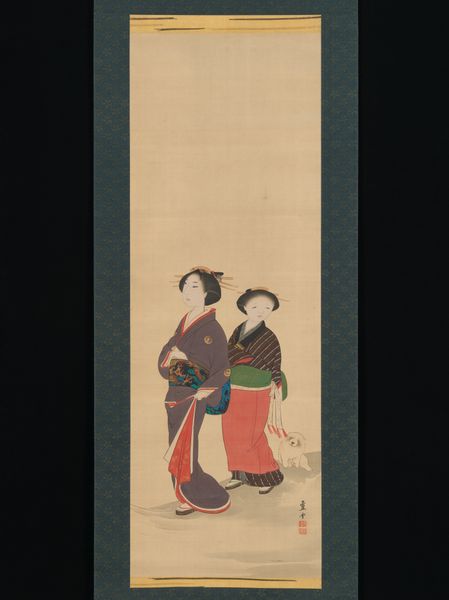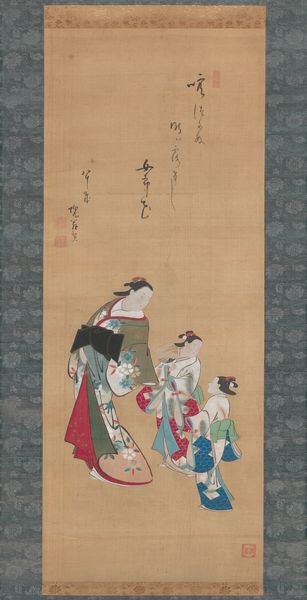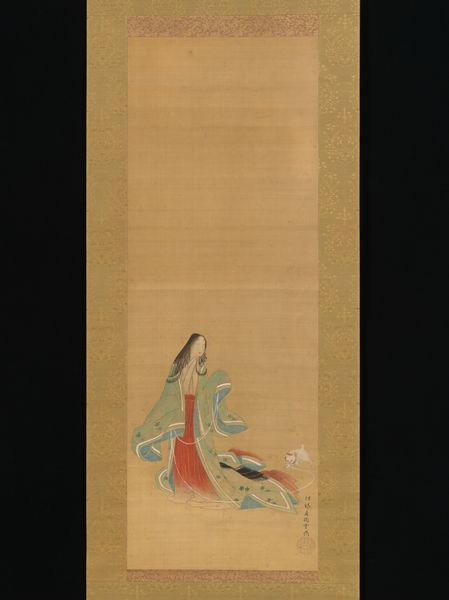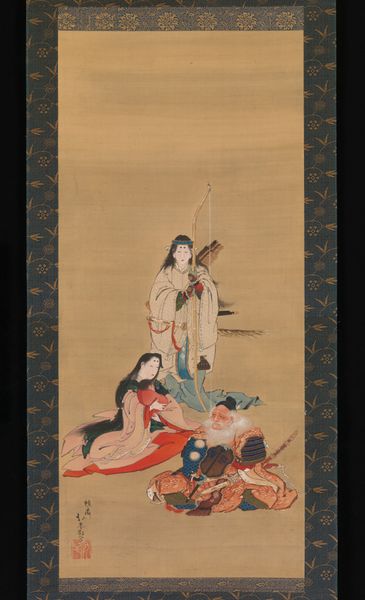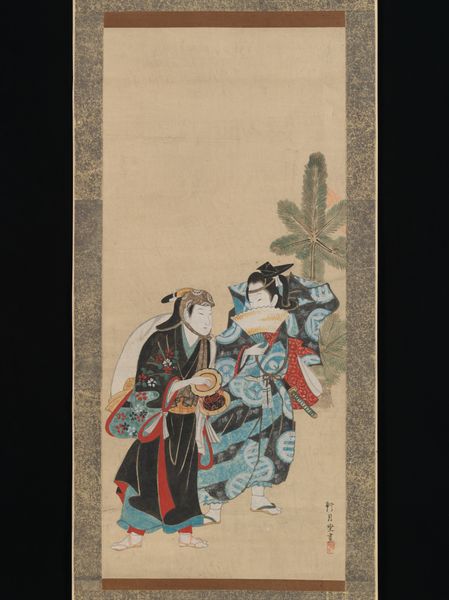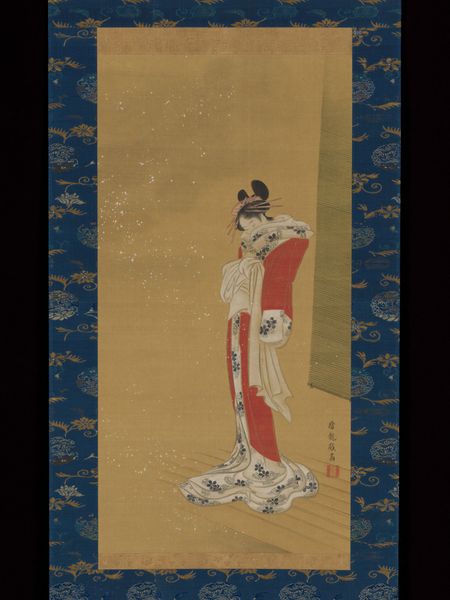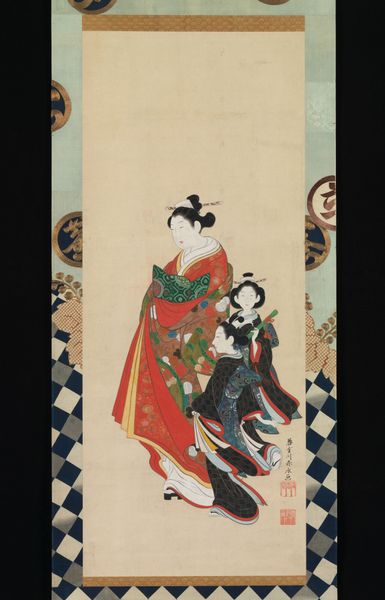
painting
#
portrait
#
painting
#
asian-art
#
ukiyo-e
#
folk art
#
figuration
#
genre-painting
Dimensions: Image: 35 7/16 x 14 9/16 in. (90 x 37 cm)
Copyright: Public Domain
Miyagawa Isshō painted Courtesan on Parade with ink and color on silk in Japan sometime in the 18th century. As a hanging scroll, this image speaks to the culture of display in Japan at that time. This artwork reflects the "floating world" culture of the Edo period, with its theaters, pleasure districts, and emphasis on leisure. You see the courtesan as a figure of both beauty and commerce. She's accompanied by attendants, highlighting her status but also reminding us of the social structures that defined her role. In terms of cultural references, the elaborate clothing and stylized figures evoke the artistic conventions of the ukiyo-e tradition. The representation of women in art is tied to power, social class, and gender roles. To better understand the context, we might explore the history of the pleasure districts, legal restrictions, and social mobility during the Edo period. The study of these historical sources will help you analyze the social and institutional contexts in which art is made.
Comments
No comments
Be the first to comment and join the conversation on the ultimate creative platform.
